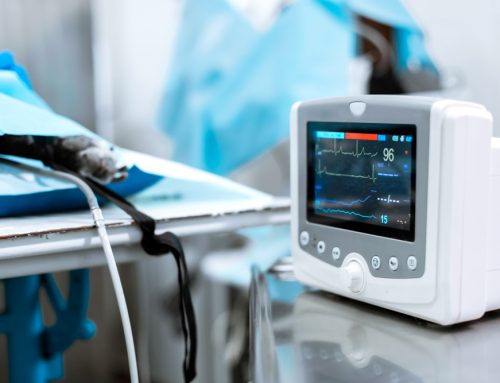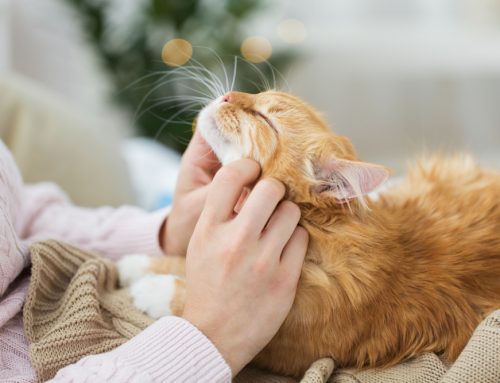Up to 80% of pets suffer from dental disease by age 3, but many owners chalk up stinky breath to normal “doggie breath.” However, that doggie breath can be a sign of dental disease and indicate more severe problems than halitosis. Dental disease can harm your pet’s entire body if bacteria from tartar buildup invade damaged gum tissue, and then seek out the heart, liver, and kidneys. Once halitosis, plaque, and periodontal disease are present, the only treatment is a professional dental cleaning performed by a veterinarian.
What is involved with a professional dental cleaning?
This is where things begin to differ between our dental cleanings and those of our pets. Performing a thorough oral exam and taking full-mouth X-rays on an awake pet is difficult, so general anesthesia is required. First, we give a premedication to calm and provide pain control. Next, we induce anesthesia via an IV catheter that makes your pet unconscious and unaware of the dental procedure. To protect the airway under anesthesia, we place an endotracheal, or breathing, tube that provides a flow of oxygen and inhalant anesthesia, and prevents fluid and debris from traveling to your pet’s lungs. Once your pet is sufficiently anesthetized, we thoroughly examine the mouth and record any issues. Dental X-rays are then obtained so we can further identify diseased teeth. Diseased teeth are then surgically extracted to prevent progression of disease and remove sources of pain for your pet. Plaque is scaled off the remaining healthy teeth at the crown and below the gum line. A final polish is performed to make the pearly whites glisten, and patients are generally ready to go home a few hours later. Click here to review our visual overview of your pet’s dental cleaning.
Why are dental X-rays necessary for my pet?
We are proud to say we are the only animal hospital in our area to offer the advanced care digital dental radiography provides. As in human dentistry, dental X-rays give a more complete picture of oral health, pinpointing any problems below the gumline.
X-rays may show these concealed dental issues:
- Jawbone loss
- Tumors involving the jawbone
- Tooth fractures
- Tooth-root abscesses
- Teeth fused to the jawbone
- Tooth impactions, where teeth are wedged together and can’t develop normally
- Retained teeth, where adult teeth failed to erupt
- Feline resorptive lesions, which often require extraction or crown amputations
- Tooth-root fragments
Proceeding with a dental cleaning and extractions without dental X-rays can lead to serious complications for your pet. We practice the highest standard of veterinary care by taking full-mouth dental X-rays before any dental procedure to keep your beloved pet safe and pain-free.
Are dental X-rays safe for my pet?

Many pet owners worry about the effects of radiation from X-rays, but we can put your mind at ease about the level of radiation exposure. The minimal amount of radiation released during radiographic procedures ensures that even pregnant or pediatric pets can undergo radiography safely. Dental radiography is necessary to provide the highest quality of dental care for your pet, to seek out any hidden disease signs, and to ensure we create an appropriate treatment plan. The benefits of digital dental radiography far outweigh the minimal risks associated with this noninvasive, painless procedure.
Bad breath? Is it time for your pet’s annual dental exam? Ask us how digital dental radiography can reveal hidden problems and allows us to get to the root of your pet’s dental issues.







Leave A Comment